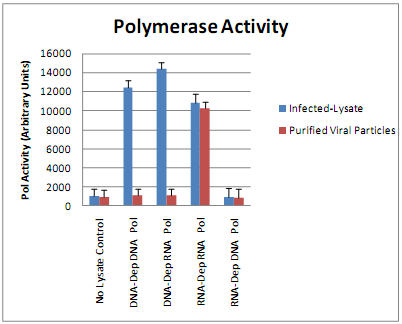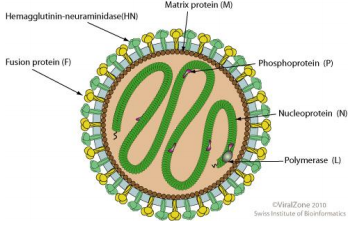Reference no: EM13371980
Question 1
A definition of a virus. how has your personal definition of a virus evolved? Write a paragraph providing a comprehensive definition of a virus.
Question 2
Influenza A (H7N9) is one of a subgroup of influenza viruses that normally circulate among birds. In late March of this year, a number of individuals in and around Shanghai, China were stricken with severe influenza-like symptoms. These individuals were found to be infected with a new H7N9 Influenza A virus, which had never before been observed to infect humans. To date, a total of 108 laboratory-confirmed cases of human infection with avian influenza A (H7N9) virus, including 22 deaths have been reported to WHO.
Answer the following questions about this virus.
a) Explain in laymen's term what the term H7N9 influenza virus means.
b) The complete genome sequences of H7N9 virus from three patients have been determined. The HA gene is most closely related to a 2011 duck H7N3 virus found in Zhejiang China. The NA gene appears to be almost identical to a H7N9 virus found in wild birds in Korea. The remaining genes appear to be closely related to a brambling H9N2 virus found in 2012 near Beijing. Briefly describe likely mechanism(s) of how this virus might have evolved.
c) Will the current seasonal vaccine influenza A vaccine likely be effective against the H7N9 virus? How about antivirals such oseltamavir or zanamavir? Why or why not.
d) It is speculated that the new H7N9 virus is transmitted to humans directly from birds. Unlike previous bird flu outbreaks (e.g. H5N1) this virus does not appear to make birds sick. Briefly speculate how this virus could have no apparent effect on birds, but cause such severe disease in humans.
Question 3
Influenza: Fact or Fiction. The book "The Great Influenza" by John Barry is a compelling story of the 1918 influenza epidemic that killed millions worldwide. Although this is an excellent book, it contains a number of factual errors concerning basic virology. Read the following quotes from the book and explain why these statements are scientifically incorrect or misleading.
Quote 1: "Soon the genes of the [influenza] virus spill into the cell, then penetrate to the cell nucleus, insert themselves into the cell's genome, displace some of the cell's own genes, and begin issuing orders."
Quote 2: "Each antibody carries thousands of receptors on their surface to recognize and bind to different antigens."
Quote 3: "But of all parts of the influenza virus that mutate, the hemagglutinin and neuraminidase mutate the fastest."
Quote 4: "Dendritic cells attack bacteria and viruses indiscriminately, engulf them, then "process" their antigens and "present" those antigens - in effect they chop up an invading microorganism into pieces and display the antigens like a trophy flag."
Quote 5: "During entry inside the endosomal vesicle, shape and form shift and create new possibilities as the hemagglutinin faces a more acidic environment. This acidity makes it cleave in two and refold itself into an entirely different shape."
Question 4
A clinical pathologist has sent you a cell line infected with an unknown virus. You are able to expand the cell line and isolate the viral particles free of contaminating host cells. Structural studies indicate that the virus is an enveloped virus. Answer the following questions.
A. To develop a routine assay for the virus, you attempt to set up a plaque assay. Although you know that the cell line you are using is susceptible and permissive for the virus and you follow the standard procedures for a plaque assay, you are unable to get plaques when plating the infected cells in agar. Provide a plausible explanation for why you are unable to get plaques (Can be answered in a few sentences).
B. To identify the genome type of the virus, you use the purified virus from human cells, lyse the cells and measure total nucleic acid polymerase activities. In addition, you also are able to isolate the viral particles free of contaminating cells and measure polymerase activity of the particles using the same assay. The data from these experiments are depicted below. (Axis Legend Abbreviations: Dep is dependent and Pol is polymerase). Given this data, what are the possibilities for the genome structure (DNA or RNA, single- stranded or double-stranded, linear or circular) of this virus? Explain why?

C. Based on your answer from Part B, briefly describe the likely mechanism of replication of this virus from the point the genome enters the cell to assembly of new viral particles. Where in the cell does replication occur and what is the source of polymerase used to replicate viral genome?
D. Based on all the information above, which routes of entry and transmission (fecal/oral, respiratory, sexual transmission etc) can you rule out and which are most likely? Why?
Question 5
You are working in a virology lab in which a new graduate student who (has not had BIOL 513) is trying to work with a new virus. The student wants to establish a cell line in which the virus can replicate to study the molecular biology of the virus. The HeLa cell line does not express the receptor for this new virus, called Protein X, and therefore cannot support entry by this virus. To make the cell line susceptible, the graduate student attempts to create a new cell line useful for study of the virus by transfecting the gene for Protein X into the HeLa cell line. Although immunohistochemistry studies clearly demonstrate that Protein X is being expressed on the surface of the transfected HeLa cells, the graduate student can still not get the new virus to replicate in HeLa cells. Explain potential mechanisms for why this might be the case. What other types of proteins might need to be introduced to develop a useful cell line (200 words max).
Question 6
Describe the key molecular/cellular events in the HIV lifecycle from entry to assembly and exit from the host cell. Indicate the most important enzymatic activities required for the HIV lifecycle and whether these activities come from the host or virus. Suggestion: Draw a diagram of the HIV lifecycle and then describe the diagram in word/paragraph format.
Question 7
There has been a (fictional) outbreak of tumors in blue jays on the USJ campus. Deep sequencing studies of fecal samples from the birds reveals the presence of two previously unknown viruses. The organization of the genomes of two viruses is depicted below:

Virus A above has the structure above and includes the A gene which has the same exact sequence as a normal blue jay gene. Virus B has no genes beyond the standard GAG-PRO- ENV shown above. Given the information above, answer the following questions:
a) What type of viruses are Viruses A and B (include Baltimore Classification)?
b) Virus A can be grown in culture. When the virus is injected in healthy blue jays, 100% of the birds develop tumors. What type of tumor virus is Virus A? Suggest possible functions of the A gene and how it could contribute to tumor formation.
c) When virus B is injected in health blue jays, ~5% develop tumors. What kind of tumor virus is virus B? Contrast how its mechanism of carcinogenesis is different from Virus A.
Question 8
A graduate student is tasked by his thesis advisor to design various simple synthetic viruses. Unfortunately, this student has not taken BIOL 513 and he fails to include essential gene(s) required for successful production of infectious progeny. Listed below are the virus types and a list of the genes the student includes in the viral genome. Explain what gene(s) are missing such that the viruses below would not be able to replicate and produce infectious progeny. Each part can be answered in 3-4 sentences.
Part A Virus A is a simple retrovirus that contains the following genes:

NC is the nucleocapsid protein, Pro is viral protease, RT is reverse transcriptase and VR is the viral receptor/envelope protein. What additional gene would be required for this virus to replicate and produce progeny? Justify your answer.
Part B
Virus B is a non-enveloped circular ssDNA virus that is designed to replicate in the cytoplasm.

VP1-4 are capsid proteins, vTF is a transcription factor that initiates production of viral RNA and ori is a DNA binding protein that binds viral origin of replication. Explain what additional genes would be needed for this virus to replicate in the cytoplasm.
Part C
An enveloped segmented dsRNA virus that contains two segments which express only 4 viral proteins: A matrix protein that binds to envelope membrane, NS1 a protein that interferes with Major Histocompatiblity Complex (MHC) expression on cell surface, VR the viral receptor for host and a RNA-dependent RNA Polymerase (RdRP). What additional genes are required for this virus to make infectious progeny? Justify you answer.

Viral RNA Polymerase
Capsid proteins
Viral Protease
Virus D
A single-stranded (+) strand RNA virus with the following genome:

VP1, VP2, VP3 and VP4 are capsid proteins, Pro is a viral protease and Poly A is a protein that binds the poly A tail of the genome to facilitate replication. What additional gene would be required for this virus to replicate and produce progeny? Justify your answer.
Part E
Given the viral proteins for virus D, suggest a mechanism for how this virus could ensure that viral proteins are made selectively over host proteins.
Question 9
Part A. Describe the journey of a hypothetical enveloped (-)RNA virus (diagram below) through the three basic host barriers to infection: Physical barriers, Innate Immune Response and Adaptive Immune Response. After overcoming physical barriers, how are viruses recognized at each step, what cells are involved, what soluble factors are involved, which adaptive immune effector cells recognize the F an N viral proteins and how is the virus eliminated at each step? For simplicity, let's assume that only the Fusion Protein (F) and Nucleoprotein (N) are recognized by the adaptive immune response. (500 words max.)? (Suggestion: Draw a diagram outlining the key steps and then convert your diagram to words. Your response should not be an exhaustive description, but rather a summary of the most important steps).

Part B Evasion of Immune Response
Almost all viruses have to produce viral proteins that aid evasion of the host immune response. For each of the viral proteins listed below, explain why the activity described would enable the virus to avoid immune response. What aspect of the immune response does the protein inhibit (i.e. intrinsic, innate or adaptive)?
a) In addition, to facilitating transcription of viral genes, the P protein also inhibits the TAP1 transporter located in the membrane of the endoplasmic reticulum membrane.
b) In addition to coating the viral RNA, the N protein inhibits the host enzyme PKR.
c) Matrix Protein M binds to the host Myd88 protein and inhibits its ability to transduce signals in the cell.
Question 10
Global pandemics caused by viruses have occurred throughout recorded history. Briefly speculate how the new H7N9 Influenza A could become a global pandemic. Include in your description answers to the following questions (400 word limit).
a. What aspects of modern society increase the opportunities for a global pandemic with H7N9?
b. What are the factors that could make the H7N9 virus more dangerous and increase the severity of disease and epidemics? Think of both viral factors, host factors and environmental factors.